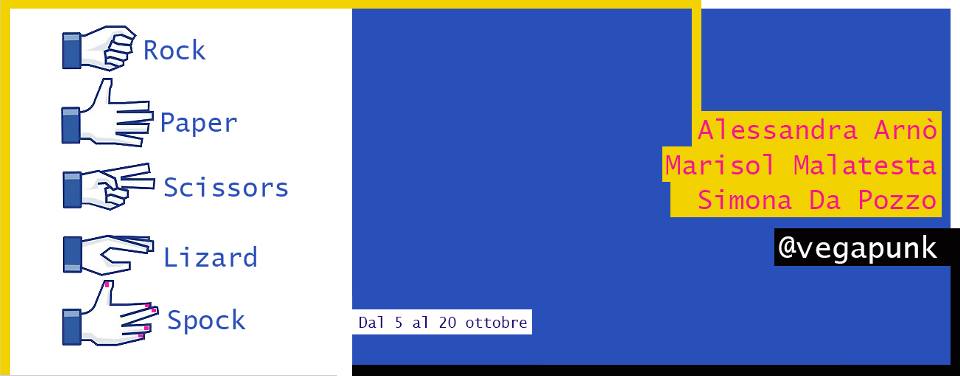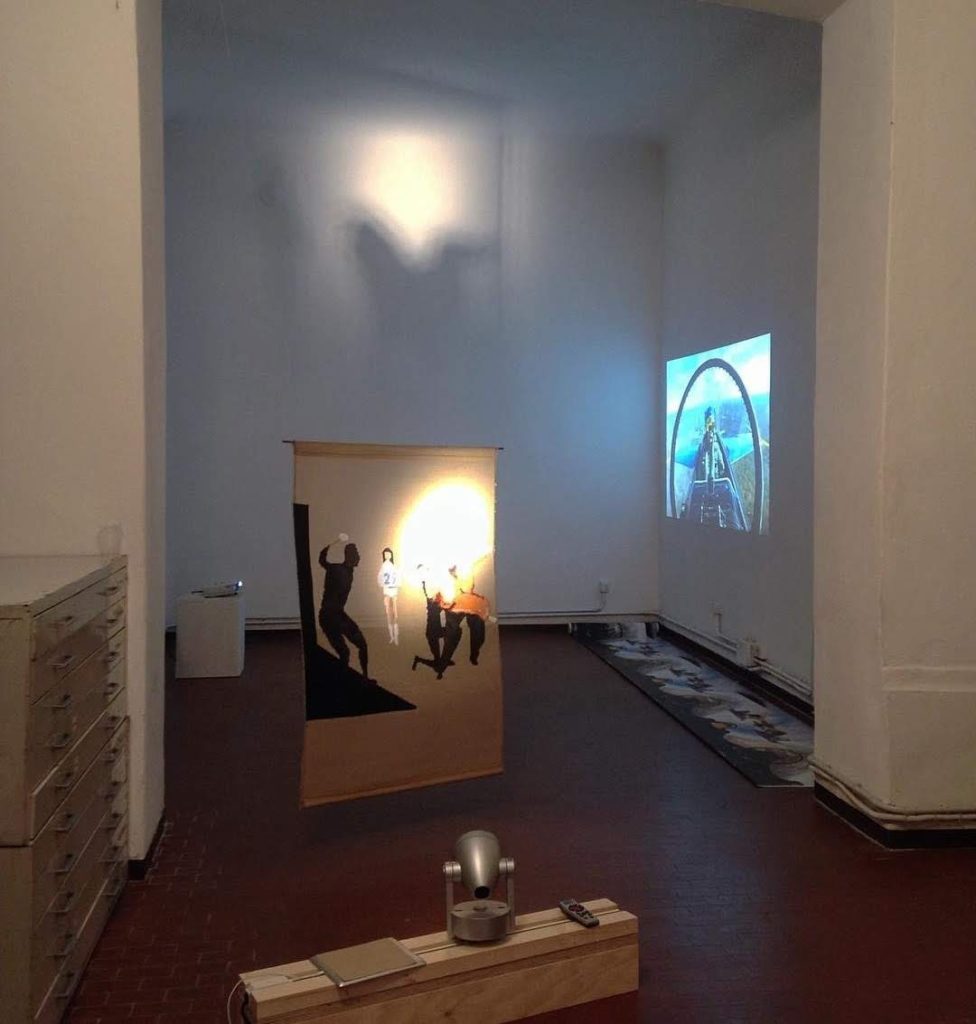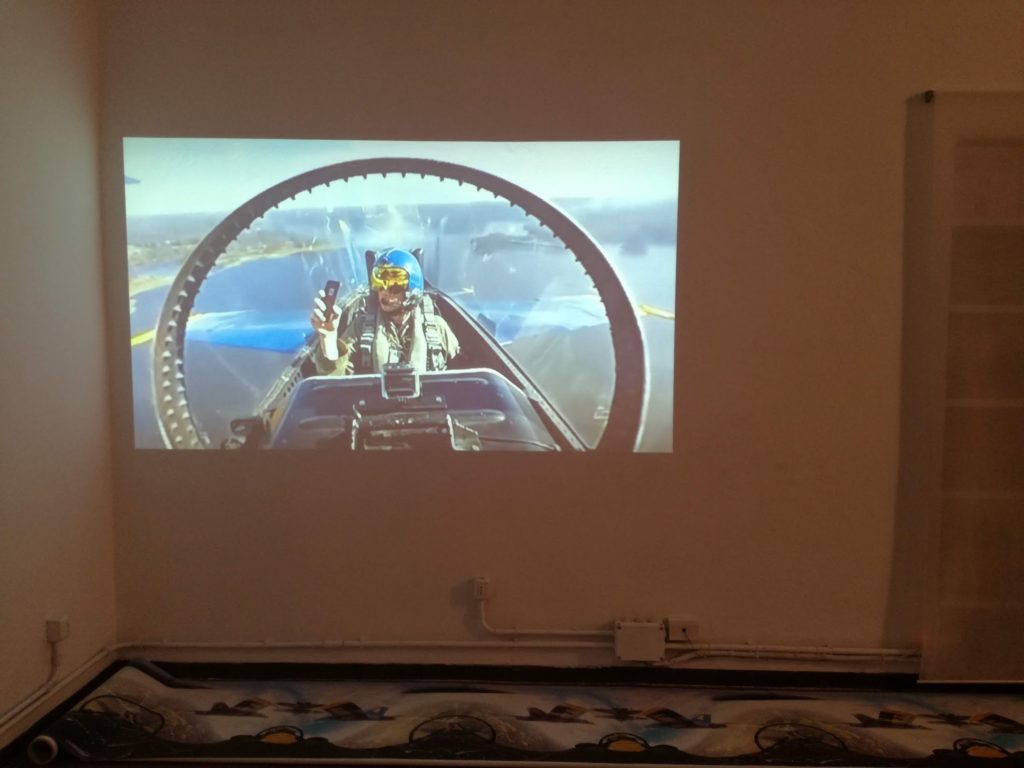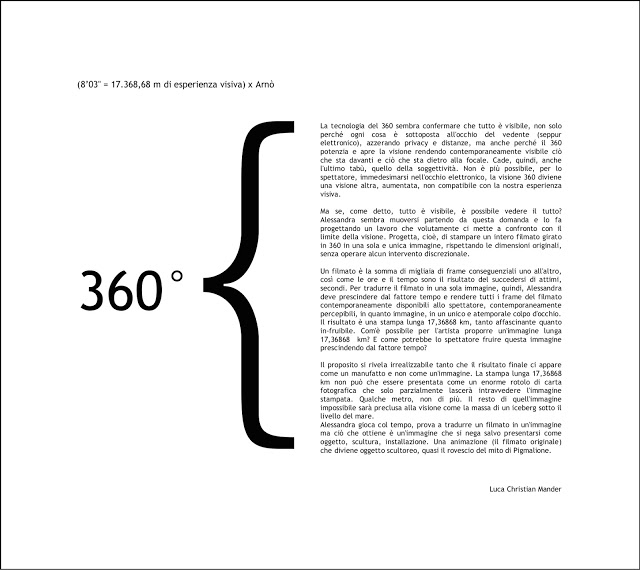Rock-Paper-Scissors-Lizard-Spock

Rock-Paper-Scissors-Lizard-Spock
Alessandra Arnò | Simona Da Pozzo | Marisol Malatesta
Vegapunk
Via Lazzaro Palazzi 9, 20124 Milan
Subway Porta Venezia
From 5 to 20 October 2018
Opening time:
from 5 to 12 October open from 18 to 21
on October 13, on the occasion of Contemporary Day, opening from 15 to 21
from 16 to 20 October by appointment
closing days: Sunday and Monday
October 4, 2018, Vegapunk will open the group show Stone-paper-scissors-lizard-Spock. The three artists in the exhibition -Alessandra Arnò, Simona Da Pozzo and Marisol Malatesta- present a dialogue of their works in the context of Spazi-Festival Diffuso Milano 2018.
Stone-paper-scissors-lizard-Spock is a variant of the original game invented by two American students and subsequently made famous in an episode of The Big Bang Theory. The variation consists in the introduction of two new signs, the lizard and “Spock” which increase the possible combinations in an attempt to decrease the draws. This choice restricts from the assumption that two players who have known each other for a long time begin to develop a reciprocal predictability and tend to equalize frequently.
The works, specially put together for this occasion, were the result of dialogue activators between the artists; from which small subversions took place in the categories/strategies that they use in their artistic practices.
The works in the exhibition share a transversal relation to the use of media. They often switch from one medium to another and from one language to another, disrupting their apparent singular readings into a more open process based reading.
In this exhibition we see often a re-mediation of the image (representation / picture) and on the language used. Malatesta with her sculptures, collages and paintings passes from a support 2d to a 3d re-mentioning the specific characteristics of one dimension on the other. Ceramics representations are applied to a 2d support to be reworked through a different language highlighting the manual skills and the processes used.
Da Pozzo ranges from image to language – the word as a suggested and idealized image. On the linguistic medium that becomes descriptive and charged with connotations and finally the word that takes on a sculptural form.
In Arnò’s work, re-mediation manifests itself partly in the language (360 video still frame) and partly in the vision itself where the term re-mediation also brings into play the conflict and the tensions of these media and thoughts. The interpretation of the vision takes place through a context shifting that allows or obliges a subversion of the time and the modality of fruition of the image / document.
If the work of Malatesta is revealed to the eye through the stratification of materials and that of Da Pozzo slips through transparencies that require a progressive approach of the user, Arnò’s work emerges and points towards the eye like an iceberg moving towards the viewer.
Alessandra Arnò (Milan 1977)
His artistic research explores the expressive potential of the video medium by experimenting with the codes and the potentials of the medium with the attention paid to the visual and technological “gap” that with their aberrations alter the perception of reality and the unconscious redrawing its boundaries.
Marisol Malatesta (Lima 1976)
Through simple forms derived from modernist abstraction and design, Malatesta builds figurative images that construct unsettling descriptions of art objects. The obvious and simple configuration of her works emphasizes the centrality of building processes: overlay, stacking, weaving, cutting, etc. This attention to construction, however, goes beyond the material, as it is concerns with the construction of an imaginary more to do with the politics of value.
Simona Da Pozzo (Caracas 1977) Her research is focused on the embodiment of the vision. Its trans-disciplinary approach results in the production of interventions that can take the form of installation, video, photography, drawing, relational actions or performance. Most of the works are participatory and take space in public spaces.



